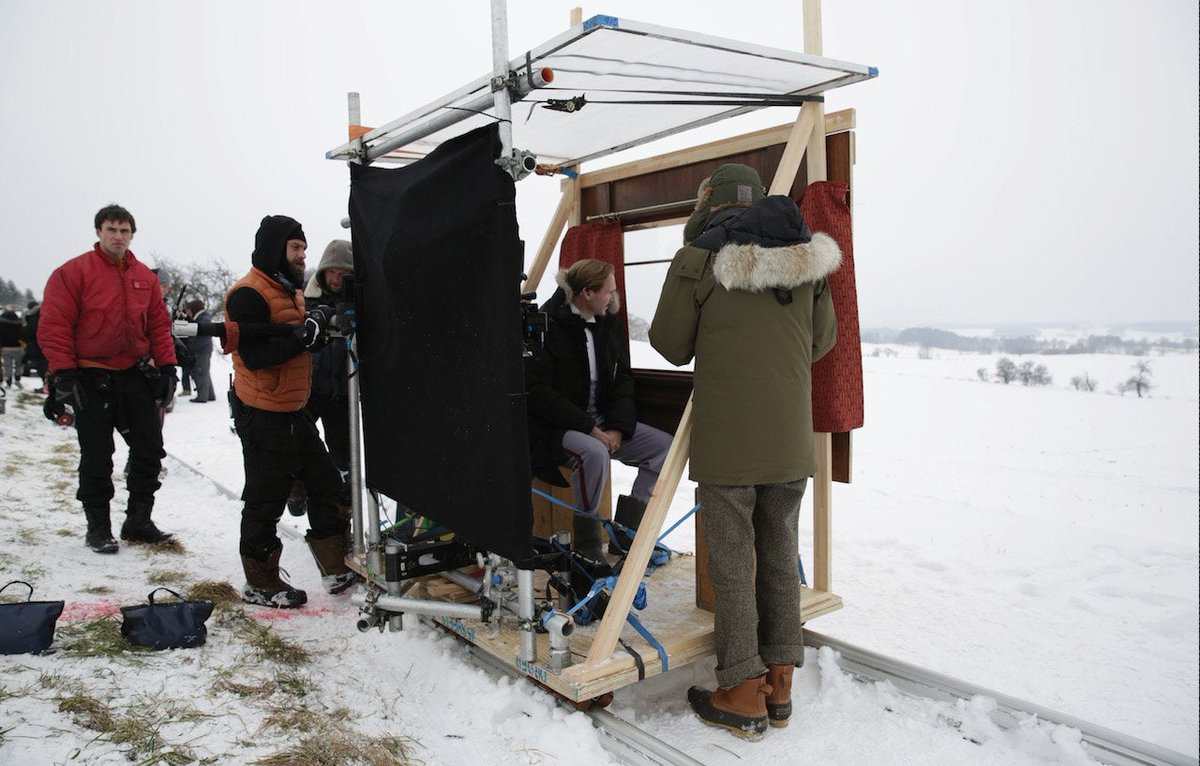Just got done interviewing a director. it’s always fun asking about the conception behind the way a scene is shot. Sometimes every second was carefully calculated months in advance. Other times they shot it that way because they only had two hours or they were losing the light.
What’s even more interesting, though, is that sometimes a director goes into a scene with a meticulous plan and it falls apart but the simpler way actually reveals greater depth, and when people watch it they assume it was intentional. Maybe it was, in some cosmic way.
I think about the famous deprogramming scene in the original Manchurian candidate. In the close-up of Frank Sinatra his face is out of focus but the stars on his uniform jacket are sharp. People interpreted this as Lawrence Harvey responding to the rank, not the person. 1/2
John Frankenheimer told me that was the best take for Sinatra‘s performance. Dailies revealed all those shots were out of focus. They called Sinatra back for re-shoots but they weren’t as good. So they went with the bad shot, and for decades people wrote theses about it. 2/2
I should add the usual version of that story is that Sinatra refused to do reshoots. That’s not what Frankenheimer told me. The discrepancy is interesting. In the version that became official, Sinatra never risked failure, and in JF‘s version, he sincerely tried but failed.
I also love Scorsese revealing the circumstances behind the perfect final shot of the last Temptation of Christ: it seems like the film burns itself out; it’s as if Jesus is transforming or losing consciousness. Apparently it was a technical fuckup. Perhaps God intervened?
Also — and this is a big one — Kubrick never shows us the aliens/higher power in 2001. He always wanted to, but he could never quite achieve an effect that he thought would properly dazzle people, and he ran out of time and money. An accidental master stroke.
Another 2001 tidbit: The significant object was originally supposed to be a transparent pyramid, but the set builder said that was too hard, so they went with a rectangular slab. Kubrick thought it looked like a bar of soap. His crew spray painted it black. Instant icon.
One of the most emotional moments in grand Budapest Hotel — Zero telling Gustav about his family’s death in the war — was originally going to be shot in an elaborate way, but they couldn’t nail it. Ralph Fiennes convinced him to stick the camera on a tripod & not move it.
I got a million of these. The point is not that nothing in a film is intentional. It& #39;s that sometimes the improvised or "compromised" solution ends up being better than the original plan. Sometimes it& #39;s so *right* that it feels as if it was always supposed to be that way.
When @sepinwall and I interviewed D Chase for The Sopranos Sessions, there were points where we noted motifs or patterns (structural, dialogue, even numeric) and he basically said they weren& #39;t consciously intended but the fact that they *seemed* intentional meant maybe they were.
We noted that a certain character is repeatedly described in terms of losing or keeping his head, and is ultimately beheaded. That wasn& #39;t *intentional* in that they always meant to kill him that way. But maybe those references sunk into the writers& #39; minds?
Here& #39;s a comparatively modest example from my own directing. In my short The Bed Thing, I had an elaborately storyboarded sequence of a man destroying a bed. It proved too complex and dangerous, so we shot it doc-style. 1/2 https://vimeo.com/365245527 ">https://vimeo.com/365245527...
That section turned out to be much more powerful that way, because we were racing against the clock, the shots were ragged and imperfect, and the speed and danger of the actors swinging those bats around elevated the whole thing. 2/2 https://vimeo.com/365245527 ">https://vimeo.com/365245527...
If we& #39;d done it the original way, we wouldn& #39;t have gotten all those shots in my storyboards and we might& #39;ve injured someone with flying wood, blinded the DP, etc. As is, the worst that happened was the leading man got bloody knuckles from punching the wreckage. An improv, BTW.
Another example from Wes Anderson& #39;s filmography: there is exactly one shot of a train in Grand Budapest because that& #39;s all they could afford. Every other train scene is actors sitting on a dolly being pushed through the landscape visible thru the "window" (a plywood wall). 1/2
Because WA shows you the real train for a few seconds, every other time there& #39;s a scene set "inside a train" your brain thinks "they are on a train," when in fact they& #39;re sitting on a dolly-mounted set with one side, being pushed by guys in parkas. 2/2
Here& #39;s the "train" that pulls into a station in GBH. It& #39;s a few steps up from what you might do in a student film. But it& #39;s the right solution. Nobody ever questions that the actors are on trains until they see photos like this.
Michelle MacLaren told me that one of the most-remarked upon shots in her @BreakingBad episode "One Minute" is where Hank shoots one of his assailants. The entire squib flew off the actor& #39;s head without actually coming apart. 1/2
Everyone assumed they would have to do it again, but then she looked at in playback and said, "It looks like a piece of his skull. We& #39;re moving on." 2/2
Here’s one from an Orson Welles classic: https://twitter.com/culture_bunker_/status/1266129656073326595?s=21">https://twitter.com/culture_b... https://twitter.com/culture_bunker_/status/1266129656073326595">https://twitter.com/culture_b...
Here’s one from The Untouchables, arguably the greatest sequence in de Palma’s 80s run. https://twitter.com/helitzur/status/1266131273124319232?s=21">https://twitter.com/helitzur/...

 Read on Twitter
Read on Twitter


